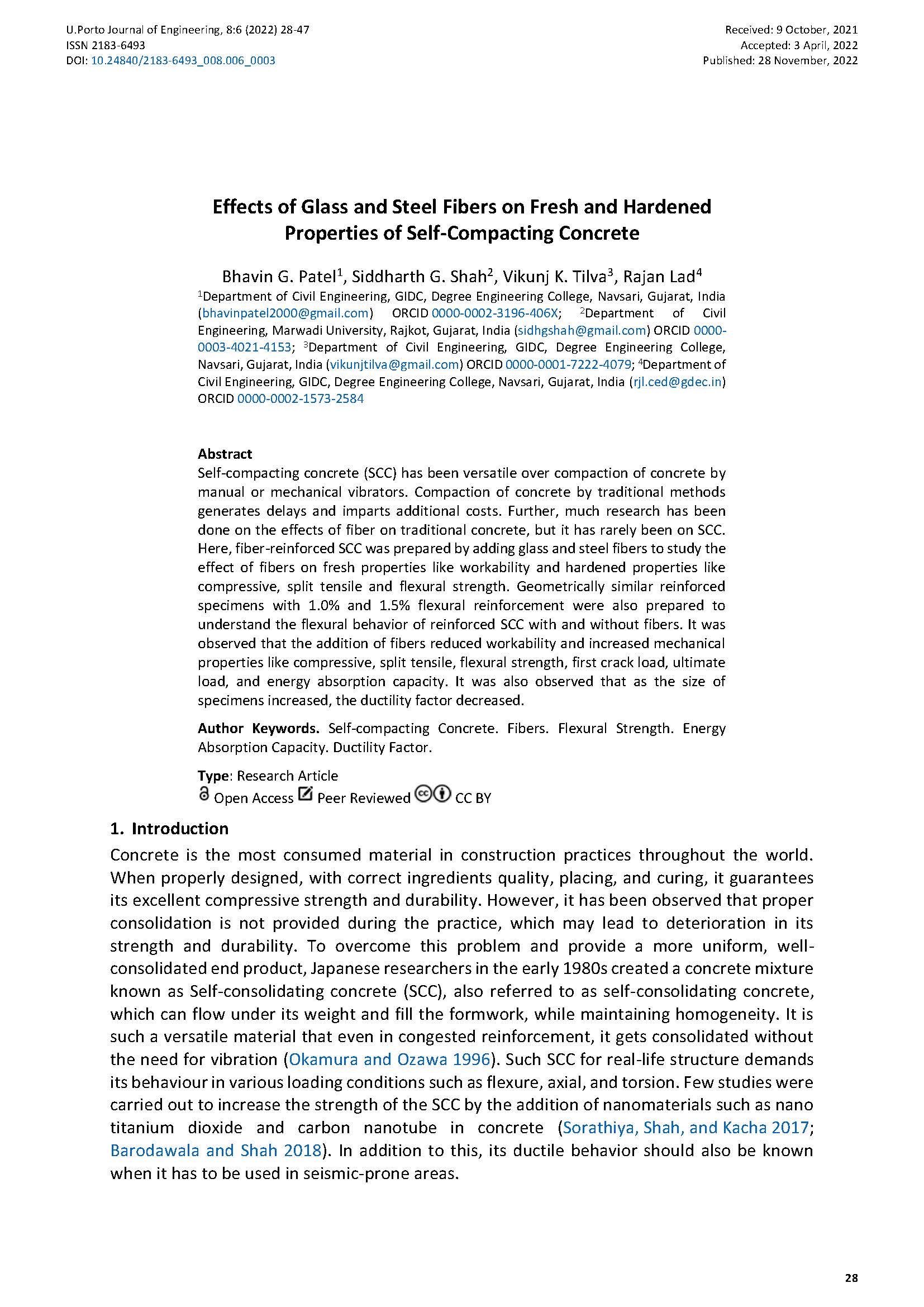Effects of Glass and Steel Fibers on Fresh and Hardened Properties of Self-Compacting Concrete
Main Article Content
Abstract
Self-compacting concrete (SCC) has been versatile over compaction of concrete by manual or mechanical vibrators. Compaction of concrete by traditional methods generates delays and imparts additional costs. Further, much research has been done on the effects of fiber on traditional concrete, but it has rarely been on SCC. Here, fiber-reinforced SCC was prepared by adding glass and steel fibers to study the effect of fibers on fresh properties like workability and hardened properties like compressive, split tensile and flexural strength. Geometrically similar reinforced specimens with 1.0% and 1.5% flexural reinforcement were also prepared to understand the flexural behavior of reinforced SCC with and without fibers. It was observed that the addition of fibers reduced workability and increased mechanical properties like compressive, split tensile, flexural strength, first crack load, ultimate load, and energy absorption capacity. It was also observed that as the size of specimens increased, the ductility factor decreased.
Downloads
Article Details

This work is licensed under a Creative Commons Attribution 4.0 International License.
Authors who publish with this journal agree to the following terms:
- Authors retain copyright and grant the journal right of first publication with the work simultaneously licensed under a Creative Commons Attribution License that allows others to share the work with an acknowledgement of the work's authorship and initial publication in this journal.
- Authors grant the journal the rights to provide the article in all forms and media so the article can be used on the latest technology even after publication and ensure its long-term preservation.
- Authors are able to enter into separate, additional contractual arrangements for the non-exclusive distribution of the journal's published version of the work (e.g., post it to an institutional repository or publish it in a book), with an acknowledgement of its initial publication in this journal.
- Authors are permitted and encouraged to post their work online (e.g., in institutional repositories or on their website) prior to and during the submission process, as it can lead to productive exchanges, as well as earlier and greater citation of published work (See The Effect of Open Access).

